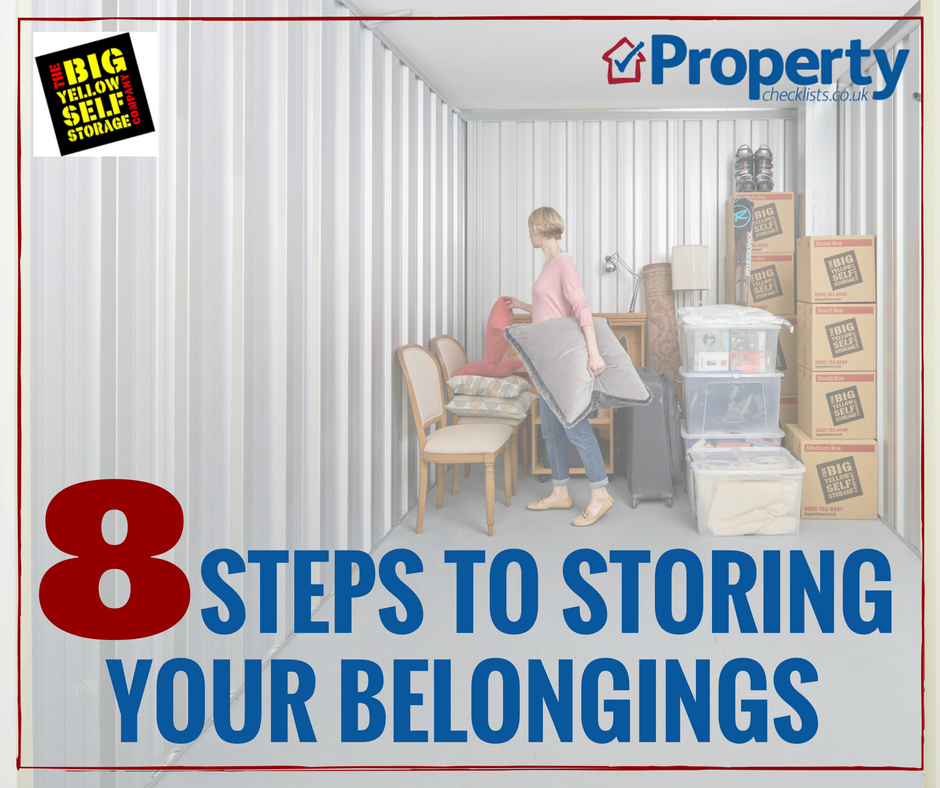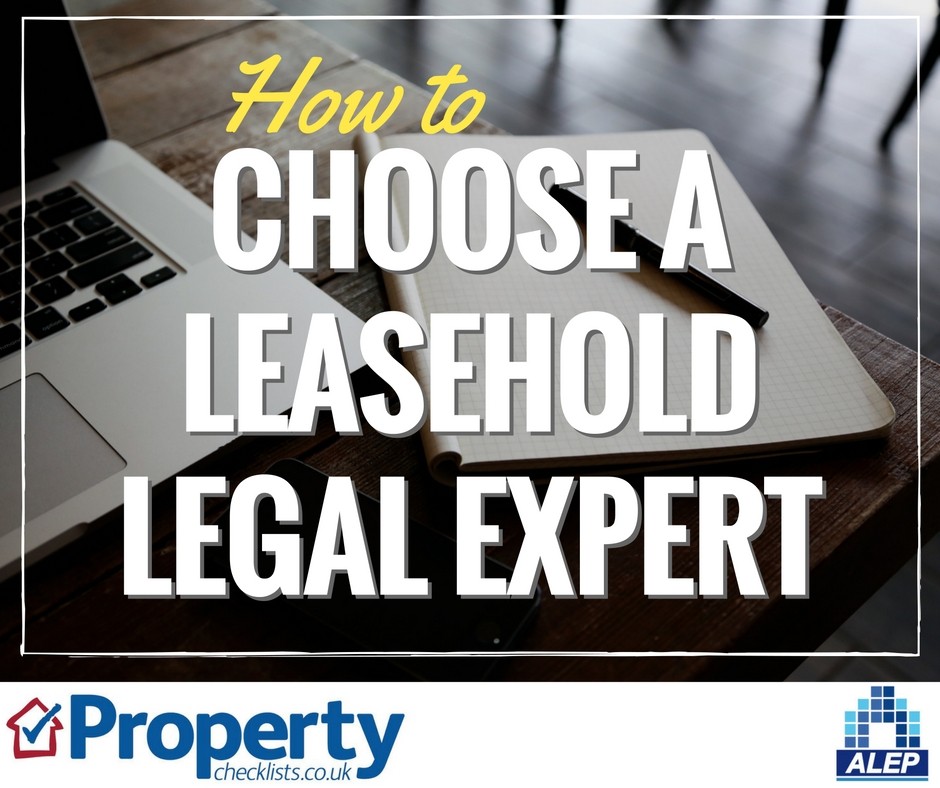Cladding and enfranchisement
In this article, Mark Chick – Director of the Association of Leasehold Enfranchisement Practitioners (ALEP) – considers the issues that someone affected by cladding may need to consider before buying their freehold.
Download the full article here
The horrific events of the Grenfell tragedy on 14th June 2017 have pulled into sharp focus the potential for significant health and safety issues around external cladding and fire safety in high-rise buildings.
Fire safety issues in blocks of flats affected by cladding and other construction issues have been a running news item since Grenfell, and rightly so. All those involved in leasehold have every sympathy for those leaseholders who, through no fault of their own, are facing significantly increased service charge costs and the very real worry brought about by being unable to sell or re-mortgage their home.
Added to this, for some leaseholders a further issue has been thrown into the mix – the possibility of buying their freehold. In most cases, this is where the freeholder has decided to sell their interest and has served a ‘Section 5’ offer notice under the Landlord and Tenant Act 1987. There might be those who are considering taking matters into their own hands using ‘collective enfranchisement’ under the Leasehold Reform Housing and Urban Development Act 1993.
This article looks at the issues that someone affected by cladding who also may be considering buying their freehold may need to think about. To understand the position - which is likely to vary from case to case - we need to understand some of the background to the cladding crisis and look at how this has affected different buildings.
Download the full article here
The first-phase report of the Grenfell Tower Inquiry found that the polyethelene-core ACM (Aluminium Composite Material) cladding was the “primary cause” of the rapid spread of the fire. The government response to this was, in the main, swift and, certainly for buildings over 18m in height, some good progress has since been made initiating remedial work.
The government then set aside funding to deal with unsafe ACM cladding for buildings over 18 metres in height. In May 2019, £200M was announced by way of a fund to assist with remedial work in the private sector. Separate arrangements were made for public sector housing.
Applications for this funding could be made until December 2019 to assist those facing the cost of remedial works. The funds were subject to certain provisos including a requirement that the costs would otherwise fall to the leaseholders themselves, and that funding is not available in any case where the costs of the remedial work have been covered by a warranty claim. In addition, a condition of funding was that those receiving it must repay to the fund all and any costs recovered from those responsible.
This fund, however, only addressed the issue for buildings over 18m in height and those with ACM cladding and so, from a leaseholder perspective, there is still more to be done. The issues raised by fire safety and the potential deficiency of building materials have gone on to resonate much more widely.
There are other types of cladding on buildings in addition to those made of ACM and, unfortunately, these also have potential fire safety issues.
In May 2020, the Housing Secretary announced the creation of a £1BN fund to assist with the remediation of Non-ACM Cladding. Once again this only applies to buildings over 18m in height, and required initial registration between 1st June and 31st July 2020, although the registration period was subsequently extended to 31st December 2020. This may provide some relief to those in affected buildings where an application has been made. On 10 February 2021, the government also announced an additional £3.5BN of funding to assist with these issues.
The proposed solution for buildings under 18m would see leaseholders having to borrow funds under a government-backed scheme. The situation is far from perfect.
It is also clear that in many cases, flat owners will not only have to foot the bill for these works, but also in the meantime pay for the cost of ‘waking watches’ (on site fire wardens) until such time as remedial work can take place. The cost of these has to be paid for via the service charge, as they are not covered by the remediation funds – even if these apply.
In December 2020, the government announced that it would make a £30M fund available to assist with the costs of waking watches although, once again, various commentators have indicated that this amount is unlikely to be sufficient.
It is not easy to tell by looking at cladding what its exact composition is, nor whether it is likely to present a fire safety issue in practice.
As a result, the RICS came up with a solution: the External Wall Safety (‘EWS1’) form, which must be obtained for any property with a height of more than 18m and which determines the type of cladding present and / or will assist in identifying other combustible materials that may be present. The form then grades the outcome works that might be needed to remedy matters, or, alternatively, states if the property is likely to be ‘safe’.
The form is required for any property with any kind of external cladding and a height of more than 18m. The form grades the outcomes from the investigation of the materials in the building into several possible outcomes on two broad bands. Band ‘A,’ where there is unlikely to be combustible material present, and Band ‘B’, where combustible materials are present.
In this ‘grading’, A1, and A2 indicate that no further action is required. A3 indicates where action is required.
A grading of B1 means that the situation is low risk and that no action needs to be taken. A grading of B2 means that the materials are not adequate and remedial action is needed.
Mercifully, the government clarified that buildings with no external cladding do not require an EWS1 certificate (as at 21st November 2020).
This does not solve the problem entirely (as there is then the debate as to what materials need to be present for the building to potentially have fire safety issues as a result of its construction). However, it does make the position slightly easier for unaffected leaseholders as they no longer require a certificate, indeed, one challenge has been obtaining one in the first place because of the acute shortage of people suitably qualified to issue them.
As has been widely reported, without an EWS1 form, or having the ‘wrong’ kind of outcome – i.e. an indication that work is required - or that the wrong kind of materials are present may make the flats unsaleable in the short term as they are likely to be un-mortgageable. Understandably, this has put those affected under significant personal and financial stress.
The Fire Safety Bill
The proposed Fire Safety Bill is a proposal to amend the The Regulatory Reform (Fire Safety) Order 2005. Namely, that the structure and external walls of the building, including cladding, balconies and windows and the entrance doors to individual flats which open into common parts, fall within the fire safety responsibility of the building owner. At the moment, this is not the case.
The Building Safety Act
This act is intended to bring about the ‘root and branch’ reform that is needed in this sector and is aimed at creating a much more accountable framework for the construction industry. However, the most contentious provisions are those relating to the cost of remedial work where parallel regime is to be created which will sit alongside the existing service charge regime.
Many familiar parts of the existing service charge provision will be there, such as the duty to consult before carrying out works (except in case of emergency), but the act will imply a legal right to recover these costs from the leaseholder even where the lease does not otherwise allow this.
What is contentious about this Bill (it is important to remember it is not yet law) are various amendments being sought to prevent the cost of remedial work being passed on to long leasehold owners.
The factors mentioned above comprise a complex mix of forces that are currently playing out before us, and this is a highly emotive subject for those leaseholders facing high service charge bills for waking watches and remedial works.
As if all of this was not complicated enough, there are also a fair number of cases where, for a number of reasons, people may be thinking of buying their freehold in a context where cladding issues also arise.
Currently, the situation with the EWS1 form means that if a building has any kind of external cladding, this needs to be fully investigated in order to reach a point at which lenders will be comfortable lending on the property. Many transactions have faced significant delays where buildings have been waiting for appropriate sign off.
There are a number of complexities, not least because of the very technical and detailed nature of the investigations that are needed to determine, conclusively, what type of cladding is present, and whether this will present an issue or not. Because these types of investigations are very specialist, there is a very limited number of people who can carry them out. This has resulted in a significant wait time for these investigations, once again compounding the stress and anxiety for the affected leaseholders.
An EWS1 report is a report that will confirm the nature and type of the cladding used on the building, gained from a review of the construction documentation and, if necessary, on-site sampling, together with a review of the technical and other data available from the time of construction.
This detailed level of background needed for these technical reports make them difficult to prepare and requires on-site physical investigation and sampling. That is to say nothing of the potential remedial work that may be required if the building is found to have the wrong type of cladding or dangerous materials.
Many of these blocks are new, and whilst that in itself is also one of the inequities of the current situation there are examples of blocks where, in addition to cladding issues, there are issues relating to lease terms and ground rent.
This inevitably is going to lead to people asking whether they should buy their freehold in such a situation.
Clearly, if lease terms or ground rent are significant issues, then enfranchisement is the likely remedy and, ordinarily, the advice would be that this is the appropriate way to proceed.
This may also be the only way around the issue if there are onerous lease terms, or there is a need to buy out a difficult ground rent review pattern.
But even if these are not driving factors, then there may be other considerations. In particular, the service charge budget. As matters stand, absent any compensation to be paid by the government, the cost of remedial work is more than likely to fall to the leaseholders - itself a significant issue as there may well be a view amongst those affected to seek to take control of the service charge budget, either by exercising the right to manage or buying the freehold as soon as possible.
The problem at the moment for leaseholders is that it is not clear what help (if any) will eventually come from the government and what form this will take. The Building Safety Bill is not yet law and its provisions are being debated.
Given the magnitude of the problem, one could take the view (particularly in the light of the coronavirus situation) that the government will not have significant spare funds to commit to undoing the problems of cladding, however unjust or inequitable the situation.
This being the case, the matter then falls to be resolved through the service charge mechanism. In other words, as is currently being popularly reported, leaseholders will face bills of many thousands of pounds to cover the cost of remedial work to the building.
To buy or not to buy? That is the question
The dilemma is this. On the one hand, taking control of the block either through the Right to Manage, or by buying the freehold via Collective Enfranchisement will mean that the leaseholders will be in control of the service charge budget and will be able to ‘back or sack’ the managing agent as well as have a say in how the works are done.
On the other hand, buying the freehold in particular means saying “goodbye” to the freeholder, which might seem like the thing that is foremost on everyone’s agenda. But what if there is the possibility of bringing a claim against the original developer for breach of contract or negligence in relation to the construction of the property?
In that case, the position could be different as, perhaps, leaving the freeholder in place until the problem is resolved might be advantageous.
In this instance, much will depend on the actual facts of the particular case. Flat owners who originally purchased from the developer may be in a stronger position, particularly if they purchased recently as they are likely to have a better chance of arguing that there is a breach of the developer’s original obligations; they may also have the benefit of original guarantees or warranties issued with the property when new, though these may or may not be capable of being transferred. They may be less affected by limitation issues - the standard time period being six years from the date of breach or knowledge of a negligent act.
If an original purchaser does have such a claim, it will be against the developer/selling entity, which may (or may not) be the same as the current landlord. Each case will be different and will therefore depend upon the exact facts and contractual set up at the point of construction.
So, what is the issue?
The issue is that if the freeholder walks away then they may well be able to resolve or dispose of the entity making it very difficult to bring any subsequent claims against it, particularly if the original developing vehicle were to cease to exist either through liquidation or insolvency.
So, if the freehold is available this should be very seriously considered but in the light of what is said above about the transfer of liabilities.
Much will depend on what the actual position is in relation to the particular building, the type of cladding or fire safety issues particular to the building.
Will I pay less if I buy my freehold and the building is affected by cladding?
In principle, you would think so. If the flats now have lower (or indeed ‘no value’) as a result of this issue, then this point certainly might be used to drive down the enfranchisement offer price.
However, enfranchisement valuations are for the longest term possible. After all, buying the freehold is ‘forever.’ Therefore, when making the assessment of what the freehold is worth the question is ‘what price would an independent investor pay?’ to buy the freehold on the valuation date, which is when the enfranchisement Notice is served.
What factors would such an investor take into account? The key driving factors are lease length and ground rent income.
Marriage value is unlikely to be a factor in these cases; if the buildings are new, then the leases will invariably be over 80 years in length. There may, however, possibly be other considerations, such as ‘development value’ – if, for instance it might be possible to obtain planning for further development. Although, with a newly built development it may be fairly safe to assume that the site has been developed as far as is possible – aside perhaps from any considerations about the chance of adding an additional floor given the relaxation in permitted development rights that took effect from 1st August 2020.
So, the next question then is, what impact (if any) would the long-term investor consider the cladding issue will have?
Assuming the worst-case scenario - that the cladding is of a type that needs replacing and the costs of this will have to be met via the service charge, there is going to be a short-term impact on value as flat values will be depressed by the need to find significant sums to contribute to the service charge. However, in the medium to long term (say 15-20 years) it can probably be assumed that these issues will have been resolved and that certainly over the very long term - say 125 years, or longer if the leases are 999 years - that in the future, the issue will have been resolved and the building will have returned to ‘normal’.
If this is the view that is taken, then the only questions to affect valuation are either the risk that somehow the freeholder may have to pay towards the cost of the remedial work, or the current uncertainty as to how this situation will be resolved. Looking to the longer term, the freeholder will certainly seek to argue that this position should not affect the valuation.
One thing is sure - the investment market does not like uncertainty and so for leaseholders there must be an argument that any investor would discount their bid for the property because of the uncertainty of the situation. This ought to work in the favour of those looking to enfranchise with an unresolved cladding situation.
There might also be arguments that work in the flat owners’ favour if the landlord has an on-site repairing obligation (e.g. for a caretaker flat or similar), or where the freeholder owns some of the flats in the building and is directly affected by these issues.
No right of set off
Another common misconception is that there is a right to reduce any sum paid on the final enfranchisement price by any amount which is ‘owed’ to the leaseholders by the freeholder. This is simply not the case.
It might be possible to achieve this by negotiation, but when valuing under the 1993 Act, there is no such option. In fact, the Act states that there is in fact an enforceable ‘charge’ over the freehold in favour of the former freeholder for any unpaid sums that are owed relating to the freehold that are not paid at completion. This would cover matters such as arrears of ground rent, insurance and potentially service charge, particularly where the freeholder has had to fund these out of his own resources.
Just because there is a problem, (which might even be the freeholder’s fault), doesn’t mean automatically that you will get anything off the price.
What if I have been served with a Section 5 Notice?
Here is another conundrum. If there is a problem with the property, then it is quite possible that the freeholder may look to sell by using the clearance process under the Landlord and Tenant Act 1987, either by serving a Section 5A Offer Notice (fixed price), or a Section 5B Offer Notice (auction route).
This sale may be for a number of reasons. It may simply be that the freeholder always had the intention to sell following completion of the development but it may also signify a desire to walk away from any ongoing site liabilities.
Therefore, any such offer will have to be looked at carefully to ensure that it represents good value based on all the relevant factors of the case. Those looking to accept such an offer will do well to understand the extent of the liabilities that their freehold company will inherit and that it may be getting into in the future.
For flat owners in this situation who want to proceed, it may well be that there is no other choice – as the terms of the offer will be fixed when made and cannot be revised. They may feel therefore that they have little room to manoeuvre; if the offer is not accepted, the result will be sale to a third party, but the options will have to be properly explored before pressing ahead.
If such a sale does proceed, there is certainly little evidence that purchase from a third-party investor will be at a lesser price than the investor paid.
What about the Right to Manage?
If there are long term issues with the property and the flat owners want to preserve the position, then perhaps exercising the right to manage is the answer. This no fault right to take over the building’s management will put the people paying the service charge in control of the service charge budget. Legal ownership of the freehold will not pass, and whist this will not be a complete solution - particularly, if there are ground rent or other lease-based issues - it may actually represent a good middle ground whilst other issues between the freeholder and the flat owners are dealt with.
If there are issues relating to ground rent then, whilst not ideal, exercising the right to a lease extension under the 1993 Act may well provide an answer. A lease extension carried in this way will produce a new lease with a zero (nil) ground rent – although, compensation will have to be paid to buy this out.
So, what are the options?
For anyone affected by cladding issues this is a complex situation enough, before bringing the question of owning the freehold into the mix.
The issues around cladding are an evolving situation, particularly given that the options for legislation around leaseholder contributions towards remedial work are still being played out in parliament.
There may well be good reasons to proceed with buying the freehold, but all of the surrounding circumstances and liabilities will have to be properly understood in order to be able to proceed safely and sensibly.
What certainly is clear is that detailed and specialist advice will be required.

For more information on the cladding crisis, read Kate Faulkner's articles here:
| Choose an expert to value your lease extension - ALEP |
Storing your belongings - Big Yellow |
How to choose a leasehold legal expert - ALEP |
 |
 |
 |